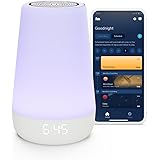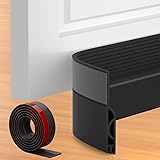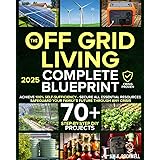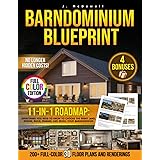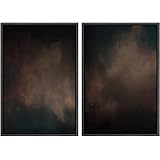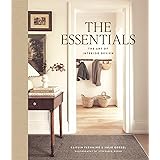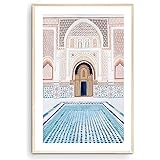The entryway is much more than just a transitional space; it’s the crucial first impression your home makes, setting the tone for what lies within. As Visha, a licensed architect, highlights in the video above, studies indicate that initial impressions are formed within mere seconds. For your home, this means the entryway immediately communicates its personality, order, and warmth.
However, many homeowners inadvertently commit common entryway design mistakes that can detract from this vital first impression, leading to a space that feels chaotic, cramped, or uninviting. This isn’t just an aesthetic issue; it can subtly influence your mood as you arrive home or welcome guests. Understanding these pitfalls and implementing strategic solutions can transform your entryway into a functional, beautiful, and welcoming portal to your living space.
Addressing Common Entryway Design Mistakes for a Grand Welcome
Creating an inviting entryway doesn’t require a complete overhaul or an extensive budget. Often, it’s about making thoughtful adjustments and strategic choices that enhance both form and function. By focusing on these key areas, you can elevate your home’s entrance, ensuring it truly reflects the comfort and style of your interior.
Choosing the Right Rug: Avoid the ‘Floating Island’ Effect
One of the most frequent entryway design mistakes involves rug placement, particularly opting for a tiny floating area rug. This common error makes the space feel smaller and disconnected, creating an awkward visual island that disrupts the room’s proportions. Instead of anchoring the space, it can make an entryway feel disoriented and less inviting.
The solution is to select a rug that appropriately scales with your entryway. Ideally, choose a rug that is wider than your door’s width to effectively anchor the space. In a hallway setting, ensure that the front legs of any furniture, such as a console table or bench, sit comfortably on the rug. This technique helps to visually extend the space, unify the area, and provide a clear, inviting path into your home, enhancing its overall aesthetic harmony and functionality.
Taming the Clutter Monster: Strategic Entryway Organization
Few things create a worse first impression than walking into a mountain of clutter or a direct view into a messy room. This immediate visual chaos can trigger stress and anxiety, especially after a long day, rather than offering a comforting welcome. An unorganized entryway not only looks bad but also signals a lack of order in the home itself, impacting your emotional well-being.
To rectify this pervasive entryway design mistake, invest in smart storage solutions designed to keep everyday items neatly tucked away. Shoe racks, coat hooks, and decorative baskets or storage bags are essential for containing items like shoes, coats, and accessories off the floor. If your front door opens directly into a potentially messy area like the kitchen or living room, consider adding a room divider, a stylish curtain, or strategic furniture placement to gently block the view. This creates a psychological buffer, allowing you to enter a more serene and composed environment.
Establishing a Drop Zone: Dedicated Spots for Essentials
Without a designated spot for small, frequently used items like keys, mail, and sunglasses, your entryway can quickly devolve into disarray. These everyday essentials tend to get scattered across various surfaces, contributing to a feeling of unmanaged chaos. This lack of a specific home for items creates visual clutter and makes it harder to find what you need when you’re rushing out the door.
The key to solving this common entryway design mistake is to incorporate a specific, intentional drop zone near the entrance. This could be a chic decorative tray or bowl where keys are always deposited, a practical wall-mounted organizer for mail and other small bits, or an entryway table equipped with built-in drawers and compartments. Creating this dedicated space ensures that essential items are always within reach but neatly out of sight, promoting a sense of order and reducing daily stress.
Selecting the Right Console Table: Storage is Key
A console table serves as an excellent functional and decorative element in an entryway, perfect for placing keys, mail, and other items you bring into the home. However, a common entryway design mistake is selecting a console table that is entirely open, without any drawers or closed storage. While aesthetically pleasing for displaying decorative objects, it quickly becomes a magnet for unsightly clutter as soon as everyday items are placed on it.
If you’re still in the market for an entryway table, prioritize models with at least one drawer or closed compartments to conceal “everyday crap,” as Visha aptly puts it. This ensures that your entryway maintains a clean, organized appearance. For those who already own an open console table, stylish baskets, decorative boxes, or lidded trays can effectively hide clutter, transforming a messy surface into a display of intentional design.
Optimizing Shoe and Coat Storage: Functionality Meets Aesthetics
Proper storage for shoes and coats is paramount in any entryway, especially given the diverse sizes and styles of our footwear and outerwear. A frequent entryway design mistake with shoe storage is installing shelves without accurately measuring the actual space needed for different shoe sizes. Cramming shoes into insufficient depth can lead to bent straps, damaged heels, and misshapen boots, compromising both their appearance and longevity.
Similarly, a shallow coat closet presents its own set of frustrations, leading to bulging doors and wrinkled garments. A widely recognized rule of thumb in design is that a wardrobe should be at least 60 cm (approximately 24 inches) deep to comfortably accommodate hangers and coats without crushing them. If space constraints limit you to a shallow wardrobe, consider specialized solutions where coats hang facing you, rather than sideways. While less convenient than a full-depth closet, this prevents the daily struggle with an uncooperative door and keeps your coats looking their best, enhancing the overall functionality of your entryway.
Durable Flooring: Protecting Your Home’s Welcome Mat
The entryway endures significant daily wear and tear, acting as a high-traffic zone that inevitably tracks in dirt, moisture, and debris from outside. A critical entryway design mistake is installing soft or delicate flooring materials, such as plush carpets or unsealed hardwood, in this vulnerable area. Such materials are highly susceptible to staining, scuffing, and water damage, quickly deteriorating the appearance of your entryway.
When selecting finishes for a new build or renovation, prioritize durable and easy-to-maintain flooring options for the entrance. Materials like porcelain tile, natural stone, engineered wood, or luxury vinyl plank are excellent choices due to their resilience and ease of cleaning. If changing the existing flooring isn’t an option, layering a heavy-duty, durable area rug on top can serve as an effective protective barrier. This not only traps dirt and moisture but also safeguards the underlying floor, ensuring your entryway remains pristine and inviting.
The Power of a Mirror: Light, Space, and Last-Minute Checks
The entrance is the final stop before heading out and the first sight upon returning home, making it an ideal location for quick appearance checks. However, neglecting to incorporate a mirror is a common entryway design mistake that misses an opportunity for both practicality and aesthetic enhancement. Entryways are often not the brightest or largest rooms in a home, and a lack of a mirror can exacerbate this feeling.
Strategically placing a mirror in your entryway offers multiple benefits. Beyond providing a convenient spot for last-minute adjustments to hair or clothing, mirrors are master illusionists. They reflect natural and artificial light, immediately brightening a potentially dim space. More importantly, they visually expand the area, making a small or cramped entryway feel significantly larger and more open. This creates a sense of airiness and spaciousness, transforming a purely functional zone into a beautifully reflective and functional piece of decor that contributes significantly to the overall appeal of your entryway.



